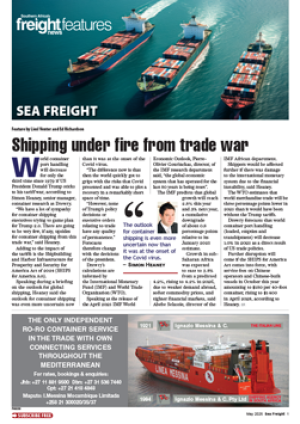It’s all about turnaround time and door-to-door service.
For all the sophisticated arguments that have been used, the mode that customers choose to use really comes down to those fundamentals.
Price/cost is rarely the determining factor in transport mode choice. Rather, it is the ability to allow businesses to compete effectively in a globalised economy. Transport is the ‘flywheel’ that drives the bigger picture in which poor reliability can lead to the loss of market share, or worse. Delivering the right goods to the right place at the right time – and time after time after time – is what it is all about.
Ever since the mid-1920s, road transport has challenged rail on this crucial continuum of turnaround time and bespoke, door-to-door services. Initially, railways responded by subsidising services. But this was insufficient. From about 1980, most railways in the world underwent radical institutional restructuring to discover the best way of fitting into the new economic realities.
South Africa made a start in following this approach after publication of the De Villiers Report on Transport in 1986. This led to partial deregulation of public transport and removal of SAR&H’s monopoly of many trades. But latterly, Transnet has resisted further institutional change in favour of a massive, state-led investment programme. Their analysis has been based on the erroneous premise that rail’s loss of market share was caused by lack of investment. Yet De Villiers had shown that market share was declining from 1950 to 1980 even while investment was growing!
Things are not going to get easier for rail in South Africa. On the contrary, the road transport sector is set to become even more competitive as new technologies emerge. Electric freight vehicles have already been successfully trialled elsewhere and, although involving high initial outlay, could lead to lower life-cycle costs for those companies able to raise the necessary investment. Paul Jorgensen’s work on performance-based standards could lead to larger, yet safer, lower cost rigs. Vehicle platooning and remote controlling could also improve distributional reliability.
Even with the radical institutional restructuring that has taken place in the UK, the road vs rail issue has not disappeared - there are still too many trucks on the road. And, while rail freight is more efficient than it was prior to the1990s restructuring, there has been little change in its market share.
Nevertheless, if rail had not taken steps to respond to changed market expectations in the mid-1990s, the situation could very easily have become ALL trucks and NO rail!
The encouraging thing about recent political events in South Africa is the growing acceptance that it takes more than large slugs of state investment to make the economy grow and create employment. State owned enterprises are not generally equipped to distinguish between viable and non-viable investments. Government’s role should be the setting of regulatory frame frameworks that are mandated to steer industry players to economically sustainable investment decisions.
South Africa’s world leading bulk export lines could be even greater if they were linked more closely to an improved regulatory framework for mining. Investment in the country’s ports could be accelerated at the stroke of a pen if competition were invited in the lucrative container and automotive trades. In the container rail sector the Department of Transport’s Interim Rail Economic Regulatory Capability (IRERC) is taking steps to help Transnet accept that some rail investments make sense, and some don’t.
If all of these steps are pursued vigorously, South Africa’s transport sector could contribute hugely to new economic growth, and the inland freight sector could yet emulate the UK – in preventing the doomsday scenario of ALL trucks and NO rail!






